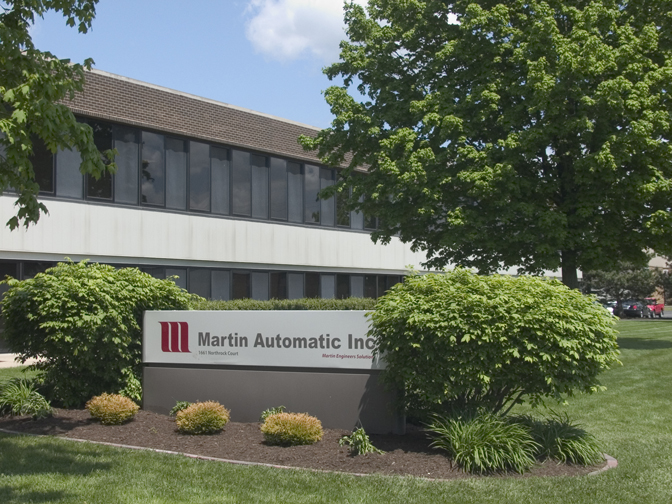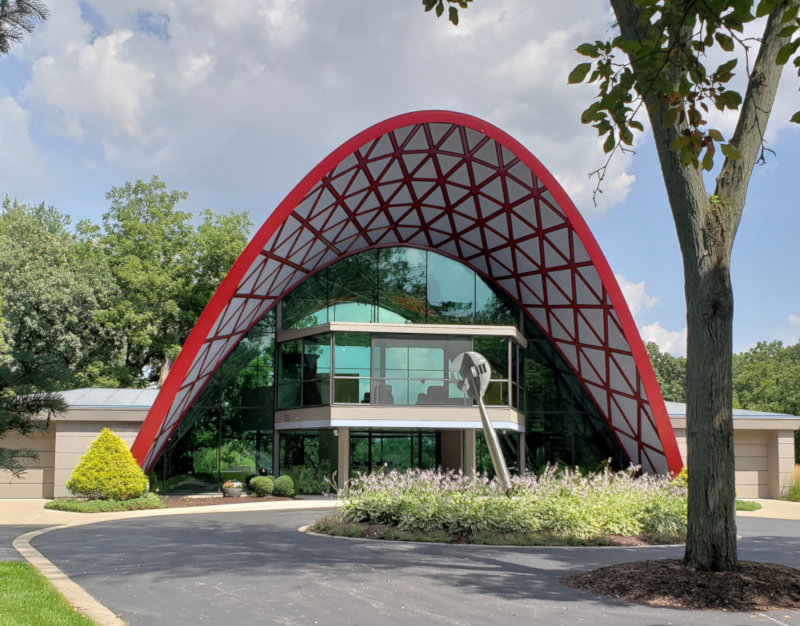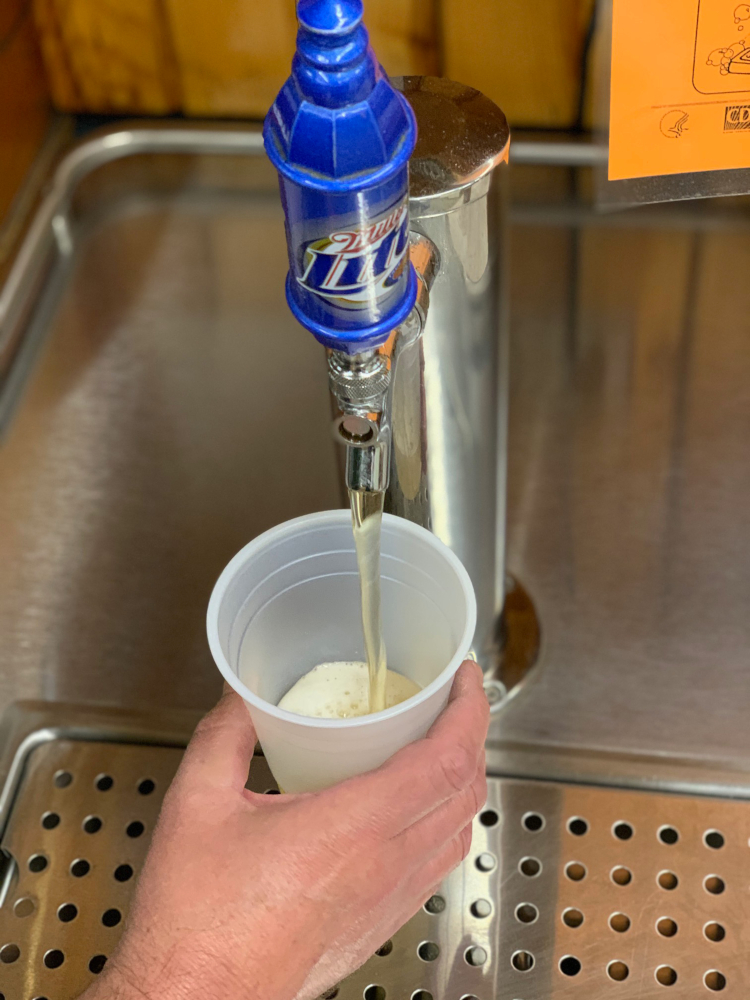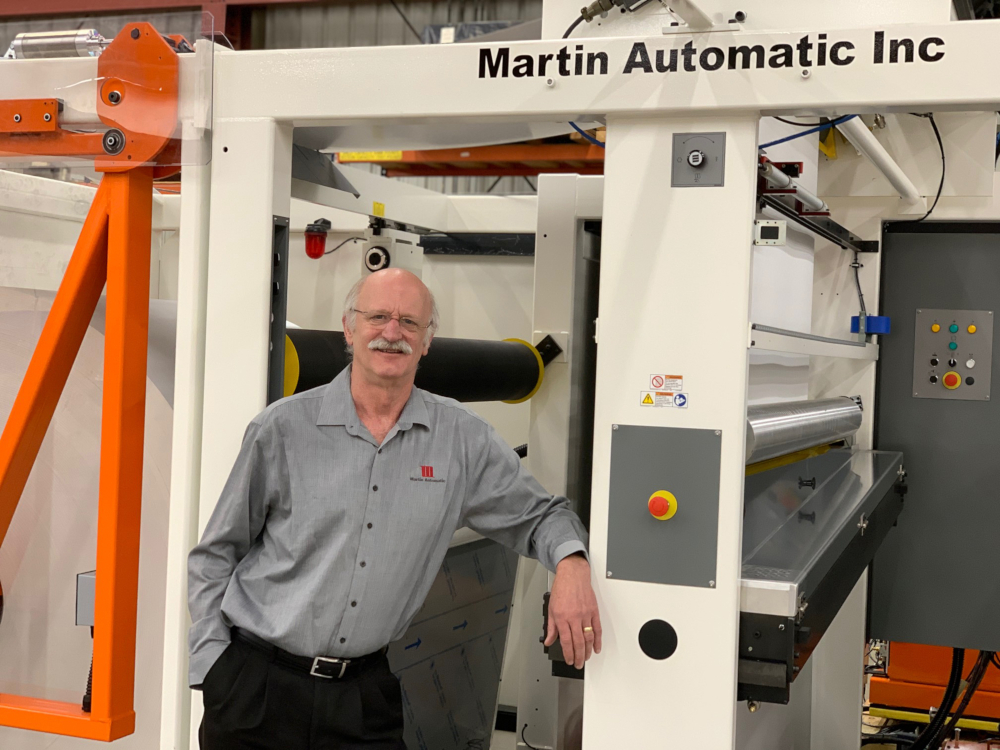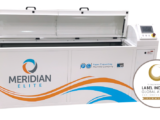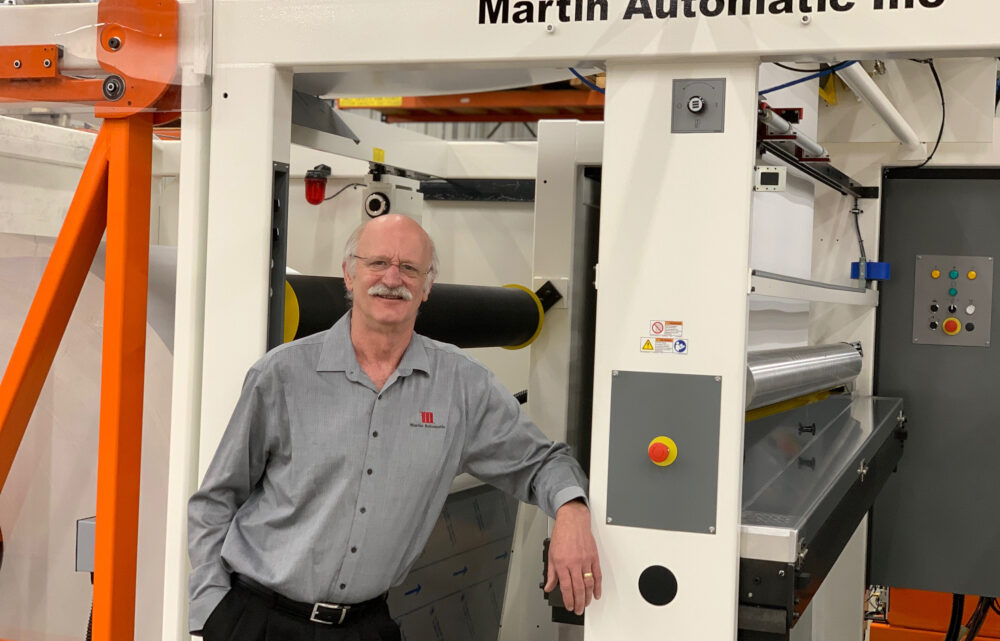
From crushed smoke to boiler plate!
August 22, 2020Sebastian Reisig looks behind the scenes at Martin Automatic to understand the full scope of its technology
Just prior to the Covid-19 lockdown I was invited to visit the Martin Automatic headquarters in Rockford, IL and given a personal guided tour by Roger Cederholm, Company Director since 1992 and President and CEO since taking over from founder John Martin in 2002. For more than five decades Martin Automatic has helped packaging converters to improve their process and productivity with tailor-made, state-of-the-art solutions. But the scope of the company’s technology has taken it into a variety of markets that range from non-wovens to metals – in fact it’s fair to say that most products that are manufactured on a reel have been processed by Martin equipment at some stage.
As Roger Cederholm stated: “There are companies that make some equipment similar to Martin Automatic, but we manufacture the most diverse line of products for more markets.” He went on to explain the way the business operates: “John Martin founded the company and put good principles in place, and I have been fortunate to be able to build on this foundation. We were green before it was in vogue, and multicultural and employee-centric before it was mandated. Our guiding principles have always put us ahead of the curve because we still believe work should be enjoyable when possible.”
A history of technology for diverse applications
Although many in the label converting field know Martin for its range of narrow-web automatic butt splicers and transfer rewinders, the company is equally well respected for its significant presence in roll-fed processes across a number of diverse industries. For example, high-speed, low-tension roll changers utilizing tape and heatseal technology in wide-web (up to 4.2m) coating and laminating of nonwovens, tissues and films. These products are then fed into continuous processing lines by other Martin splicing unwind platforms to produce, for example, disposable diapers, feminine care products, absorbent pads, sanitizing wipes and facial masks. Other markets where one can find Martin unwinds and rewinds include: paperboard products, including folding cartons, beverage carriers, and disposable cups and plates; roofing, industrial and construction goods; medical and diagnostic products; and specialty converting and manufacturing.
Today, under the guidance of John Martin’s son, Jordan, Martin Automatic occupies a 190,000 square feet (17,650 square meters) complex where 175 employees address both company operations as well as its manufacturing processes. Martin Automatic’s reputation today is one defined by the quality and clarity of the technology it designs and manufactures, such as the inertia compensated dancer roller and, in more recent years, the Airnertia™ idler rollers, which is gaining renown for its high-speed, low-tension processes. More importantly, Martin Automatic has leveraged its extensive understanding of automation to develop solutions that improve efficiencies, reduce waste, and enhance profitability for a long list of companies.
Martin Automatic currently deploys its technology and solutions to manufacturers in more than 55 countries around the world and maintains multiple patents while continuing to explore new ways to innovate for web-fed industries through automation. Given this success, it’s no surprise that the enterprise enjoys one of the lowest staff turnover rates in the US, with average job tenure being 22 years. Indeed, Cederholm himself has been with the company since the early 1970s.
It’s all about automation
Martin Automatic’s patented technology and innovative solutions enable continuous production that results in enhanced productivity and profits for partner companies. Integrating automatic butt splicers and rewinders into their production lines provides Martin’s customers with significant cost savings and waste reduction. Consider just one aspect of material waste in label converting: partially used rolls. In the past, there has been a large amount of waste related to the disposal of partially used rolls that contain less than 600 feet (180 meters) of material. Many companies send these to either recycling or the landfill, generating waste and reducing profits. In response, Martin’s technology allows converters to incorporate partially used rolls efficiently into their production runs as well as to function in additional contexts, such as cleanups and make-readies.
Users of automatic splicers typically experience an increase in net production speed of 15 percent or more, due both to the fact that straight line production involves fewer starts and stops, as well as the greater confidence such automation gives an operator to run a press at a faster speed. Automatic splicing often results in improvements to process quality, thanks to the fact that this technique allows presses to run at a consistent speed, avoiding fluctuations in, for example, UV power output and associated curing intensity. Eliminating manual changes also allows web tension to remain constant, helping to ensure that color matches stay consistent across a run.
Martin Automatic solutions can also transform actual physical operations on the floor for company employees. With a manual setup, operators typically have to handle large shafts or operate complex lifting systems. Automation via a roll changer with an integrated lift and load system allows operators to execute this task with the simple push of a button. Companies using this approach can reduce the risk of workplace injuries while also reducing the risk of damage to shafts during roll changes.
The specific act of changing rolls automatically, without stopping or slowing a process, is just one aspect of automation. Increasingly, Martin’s customers are looking to use personnel resources more efficiently, leading to technological innovations that optimise efficiency in the use of their splicers and rewinders. As an example, an automation package available on the MCBWW Automatic Butt Splicer, typically used on high speed wide web paperboard presses
- runs material off the core at full speed for maximum roll usage
- removes spent cores automatically and transports them for use at the rewinder
- leverages an integrated conveyor system to transport rolls
- loads rolls onto spindles automatically and,
- facilitates accurate and fast splice preparation with automatic alignment of a new roll.
A culture of creativity
The above gives an overview of the company’s range of capabilities and says much about its innovative prowess. As Cederholm commented: “There are two plaques in my office that characterize this perfectly. The first one states Innovation – ‘The best way to predict the future is to create it.’ The second, and equally as important is: ‘You can’t build a reputation on what you are going to do!’
The company’s innovative skills combined with its pastoral attitude are perhaps best exhibited in its corporate center on the banks of the Rock River. Initially a vision of the late founder John Martin, this steel and glass complex is the largest structure designed and built by Martin Automatic. Formerly Martin’s personal residence, the architectural showpiece, fondly referred to as the tongue-twisting ‘inverted hyperbolic parabola’, is used for company meetings and functions, including receptions and the annual Independence Day picnic. It continues to serve as housing, nowadays for university students serving internships in Martin’s engineering department.
An entrepreneurial spirit permeates throughout the company and is endemic in its culture – a kind of DNA. Referring back to his earlier comment about being employee-centric, Cederholm spoke about the way the company empowers each member of staff. “We believe that each person is the owner of a company of one and has a single large customer, Martin Automatic. And each person has multiple smaller customers, his or her colleagues who take ownership of their decisions and roles within the company. The goal is to allow each person maximum creativity within their sphere of influence and to encourage active, versus passive, participation in spending the company’s money as if it were their own. We believe the result is faster more creative responses to customer needs and more fun and satisfaction within the four walls.”
In summary
It’s clear from all this that automation brings with it a wide range of advantages across an enterprise. From increased efficiency to reduced waste, companies leveraging Martin Automatic solutions get a serious return on their investment. These advantages extend to their customers as well, allowing companies to provide more efficient service and delivery, and generating a higher quality product. This is sure to give Martin-partnered companies a competitive advantage too, as they compete for orders in an increasingly crowded space. One final comment on the Martin culture and the freedom and trust given to its employees is the fact that, unusually for the US, there is a keg of beer on tap in the staff break area. It started out as a way to bring employees together at the end of the day, keep open the internal lines of communication, and brainstorm new ideas and approaches. But as Roger Cederholm concluded: “I’ve sat down with customers and actually begun to design machines here, and we often joke that there are vending machines for those who want a soda – at Martin Automatic the beer is cold and free – the soda is just cold!”
